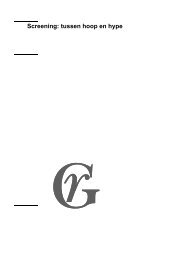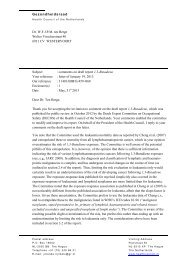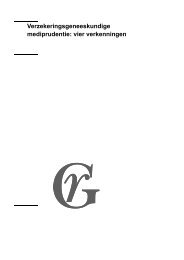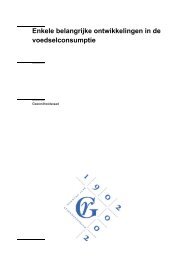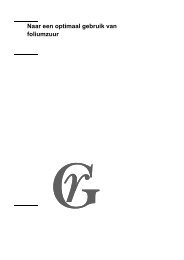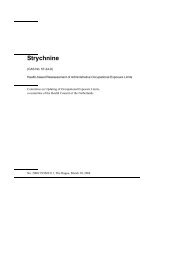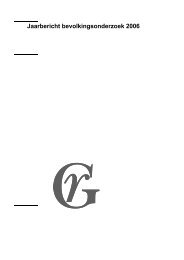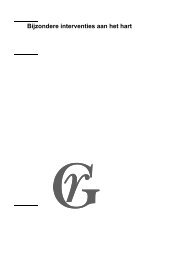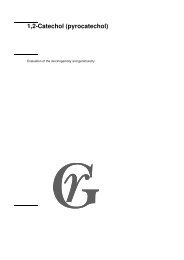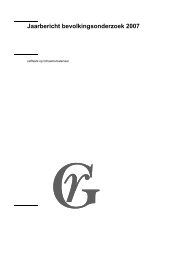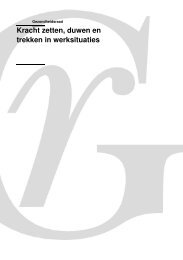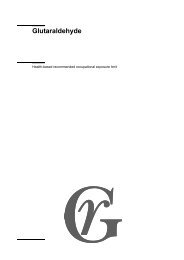Liquefied petroleum gas (LPG) - Gezondheidsraad
Liquefied petroleum gas (LPG) - Gezondheidsraad
Liquefied petroleum gas (LPG) - Gezondheidsraad
Create successful ePaper yourself
Turn your PDF publications into a flip-book with our unique Google optimized e-Paper software.
4 Uses<br />
The proportion of longer chain molecules (≥C 5<br />
) is 2% at most; the share of the<br />
unsaturated molecules is approximately 30%. The boiling point ranges from -40<br />
to +40 o C (Kat98).<br />
Propane<br />
Propane is a colourless and odourless flammable <strong>gas</strong> (Ber95a). Amoore and<br />
Hautala listed an odour threshold for propane of 16,000 ppm (29,440 mg/m 3 )<br />
(Amo83) while Ruth reported the odour threshold to range between 972 and<br />
19,440 ppm (1800 and 36,000 mg/m 3 ) (Rut86).<br />
Butane<br />
Butane is a colourless and flammable <strong>gas</strong> with a <strong>gas</strong>oline-like or natural <strong>gas</strong><br />
odour (ACG02c). Amoore and Hautala listed an odour threshold for butane of<br />
2700 ppm (6530 mg/m 3 ) (Amo83) while Ruth reported the odour threshold to<br />
range between 1.2 and 6 ppm (2.9 and 14.6 mg/m 3 ) (Rut86).<br />
<strong>LPG</strong><br />
<strong>LPG</strong>s are widely used as fuel and as feedstock in chemical processes. In some<br />
countries, there is also extensive use of <strong>LPG</strong> as automotive fuel. <strong>LPG</strong>s are also<br />
used as propellants in pressurised aerosol containers (CON92).<br />
Propane<br />
Propane is used as fuel <strong>gas</strong> in the household, industry, and vehicles (sometimes<br />
mixed with butane), in organic synthesis, as an intermediate in petrochemical<br />
manufacture, as a refrigerant and aerosol propellant (amongst others in<br />
cosmetics). It occurs in natural <strong>gas</strong> (Ber95a, Moo82). In the USA, it has a GRAS<br />
(‘generally recognised as safe’) status for use as a food additive, i.e., to expel a<br />
product or to reduce the amount of oxygen in contact with the food in the<br />
packaging (see Code of Federal Regulations: 21CFR184.1165; revised as of<br />
April 1, 2003).<br />
Butane<br />
Butane is used in liquid fuels of high octane, in organic synthesis of different<br />
chemicals, in the production of synthetic rubbers, as a refrigerant and aerosol<br />
propellant (amongst others in cosmetics), and as a constituent in liquid natural<br />
<strong>gas</strong> (Ber95b, Moo82). In the USA, it has a GRAS (‘generally recognised as<br />
safe’) status for use as a food additive, i.e., to expel a product or to reduce the<br />
134-5 <strong>Liquefied</strong> <strong>petroleum</strong> <strong>gas</strong> (<strong>LPG</strong>), Propane, Butane



